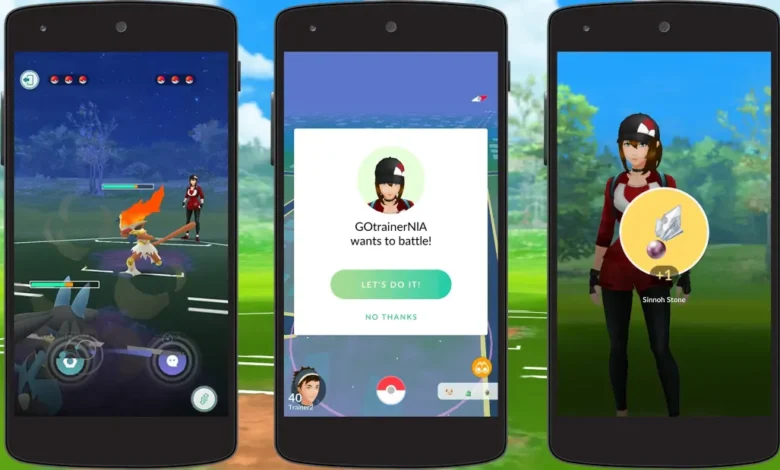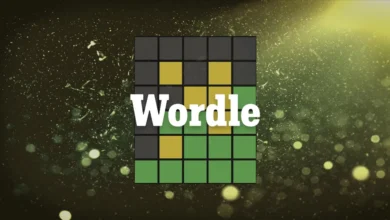How to Win Trainer Battles in Pokemon GO

Pokémon GO trainer battles can be confusing and hard to win, especially when you’re just getting started. Maybe you’re trying to rank higher in the GO Battle League, or maybe you just want to beat your friends. No matter your goal, battles can be a little tricky to learn at first.
But don’t worry we’ve created this simple, easy-to-understand guide just for you. We’ll walk you through the basics, teach you how to build a strong team, and give you useful tips to help you start winning more battles. So get your Poké Balls ready. let’s jump in!
1. How Pokémon GO Battles Work
When you enter a trainer battle, you choose three Pokémon to fight with. The battle is real-time, which means both players are attacking and defending at the same time. Here’s how it works:
-
You tap the screen to use fast moves. These build up energy.
-
Once you have enough energy, you can use a charged move, which does more damage.
-
You get three shields in each battle. These protect your Pokémon from powerful charged moves.
You can use shields to block your opponent’s charged attacks, but you only get three per battle, so use them wisely!
The battle ends when one player loses all three of their Pokémon. If the timer runs out, the winner is the player who has more Pokémon left — or, if both have the same number left, the one with more total health wins.
2. Choosing the Right Battle League
Pokémon GO has three different battle leagues, and each one is based on how strong your Pokémon are:
-
Great League – Only Pokémon under 1,500 CP can be used.
-
Ultra League – Pokémon up to 2,500 CP are allowed.
-
Master League – No CP limit. You can use your strongest Pokémon.
If you’re new to battling, start with the Great League. It’s the most beginner-friendly because you don’t need super rare or high-CP Pokémon to do well. The Master League, on the other hand, is full of very strong players who use legendary and maxed-out Pokémon, so it’s not ideal for beginners.
Each league has its own meta (popular Pokémon and strategies), so don’t be afraid to try all of them to see what works best for you.
3. Building a Strong Battle Team
To win more battles, you need a team that works well together. Don’t just choose the Pokémon with the highest CP that’s a common beginner mistake.
Here are some important things to think about when building your team:
Type Coverage
Each Pokémon has strengths and weaknesses based on their type. For example:
-
Water Pokémon are weak to Electric moves.
-
So, if you’re using a Water-type, you should also have a Ground-type Pokémon, which resists Electric moves.
Try to build a team where your Pokémon cover each other’s weaknesses. That way, if your opponent brings out a strong counter, you’ll have a good backup.
Balance and Roles
Use different kinds of Pokémon:
-
Lead Pokémon – Starts the battle strong and sets the tone.
-
Safe Swap Pokémon – Can switch in and handle a variety of threats.
-
Closer Pokémon – Strong enough to finish the battle when the opponent’s shields are down.
Try Pokémon that are good at surviving (high defense and HP), not just hitting hard.
4. Choose the Right Moves
Your Pokémon’s moves are extremely important. In battles, the moves you pick can often decide whether you win or lose.
-
Fast Moves – You’ll use these most often. Some build energy quickly, while others do more damage.
-
Charged Moves – These use energy and can deal big damage.
If possible, unlock a second charged move for your Pokémon. This costs Stardust and candy, but it gives you more options during battle.
Here’s a good strategy:
-
Use a fast-charging move to force your opponent to use their shields.
-
Then follow up with a powerful charged move when their shields are gone.
Tip: Avoid using moves that charge too slowly unless they’re very strong and you’re using them late in the battle.
5. Understanding and Managing Energy
Think of energy like fuel you get it from using fast moves, and you spend it to use charged moves.
Each fast move gives a different amount of energy:
-
Fast energy moves: Mud Shot, Psycho Cut, Shadow Claw
-
Slow but strong moves: Waterfall, Confusion
You can store up to 100 energy per Pokémon. This means you can save up and use two charged moves in a row, which can catch your opponent off guard, especially if they’re out of shields.
Learning to manage your energy is one of the best ways to win more battles. Try not to waste energy by fainting with a full charge bar!
6. Smart Timing and Strategy
Battles aren’t just about attacking smart timing matters too. Here are a few things to watch out for:
Shield Timing
Don’t waste your shields early in the battle. If your Pokémon is already low on health, it might be better to let it faint and save your shield for later.
Try to guess when your opponent is using their strong charged move and use your shield then.
Switching Pokémon
You can switch Pokémon every 60 seconds, but timing is key.
-
If your Pokémon is in a bad matchup, switching out may help.
-
But sometimes it’s better to stay in and do some damage before switching.
Weather Bonus
The weather in the game boosts certain types of Pokémon. For example:
-
Sunny weather boosts Fire, Grass, and Ground moves.
-
Rainy weather boosts Water and Electric moves.
Check the weather before battles boosted Pokémon will have slightly higher CP and stronger attacks.
7. Advanced Tips for Winning More Often
Once you get the basics down, here are some more advanced ideas to help you level up your skills:
Use a “Safe Swap” Pokémon
Pick one Pokémon on your team that can safely switch into almost any situation. Good examples are:
-
Vigoroth – Normal type, very few weaknesses, great stats
-
Sableye (Purified) – Only weak to Fairy, great coverage with Shadow Claw
This helps you regain control when you’re in a bad spot.
Use the “Swap Trick”
After using a charged move, there’s a short pause before the next action. That’s the perfect time to switch Pokémon, it can throw your opponent off and give you a small edge.
Practice Against Team Leaders
Don’t forget, you can practice battles against the in-game team leaders (Blanche, Candela, and Spark). This is a great way to:
-
Test your team
-
Learn how moves work
-
Get better at timing charged attacks
And you won’t lose any ranking if you lose!
Record and Watch Your Battles
If you’re serious about getting better, record your battles and watch them later. You can catch mistakes, learn what worked, and figure out better strategies for next time.
Final Thoughts: Practice and Patience
Getting good at Pokémon GO trainer battles takes time and practice. You won’t win every match, and that’s okay! Every battle teaches you something new.
Here’s what to remember:
-
Pick the right league for your skill level
-
Build a balanced team with good type coverage
-
Choose the right fast and charged moves
-
Use your shields wisely
-
Manage your energy and switch smartly
-
Keep practicing and try new strategies
Most of all, have fun! Even if you lose, you’re still learning and improving. With time, you’ll start to win more often and feel more confident in battles.
How Will You Start?
Are you ready to try trainer battles in Pokémon GO? What’s your first team going to be? Share your plans in the comments and good luck out there, Trainer!



